A bit less walking on day 2 in Lima (light blue is walking, dark blue is in a vehicle – Google maps lets you know). Not as little as it may appear, as this covers a much bigger swathe of Lima, the previous day’s ventures were all centered down towards the bottom in Miraflores. But still, I only walked about 5 km versus 12 the first day. It was that second day of vacation where you just kind of plotz and say, I don’t want to move anymore.
I began the morning with an Uber ride to Barrio Chino, or Chinatown. My driver managed to get into a minor accident with a taxi – switching lanes without looking or signalling, no one hurt, minimal damage, but they decided to get out in the middle of the highway and chest bump a bit as to who was at fault (my driver was), which got the police involved, who, given that the taxi driver just wanted something like 20 soles for the minor damage, they told my driver to just pay it and be on his way. He demanded I pay for it as his passenger, it was now my fault. I refused, he sullenly drove me most of the rest of the way to Chinatown and dropped me off. Needless to say, poor rating, and Uber refunded the fare. If we hadn’t been in the middle of a highway, I’d have just walked away from the car.
Back to Barrio Chino, visually, not much to see. A big arch, some pretty painted buildings, a few restaurants, mostly not very Chinese, as the population here are much more just integrated throughout the city, and every neighborhood has its chifas, as I talked about yesterday. But, I wanted to see it.
I’ve been reading Ricardo Zarate’s The Fire of Peru. He’s an LA based chef who grew up in Lima and now runs a small empire of Peruvian restaurants in LA. Talking about some of the things that he holds dear to his heart, and that he remembers from younger days and/or makes a point to do when he’s back in Lima, I decided to add some spots to my ventures. Breakfast at Arakaki, right across from the central market, and a block from Barrio Chino, of the classic sopa rachi, which he describes as a rice and pork belly soup. It’s not exactly that, it’s congee, rice porridge, packed with beansprouts and topped with boiled tripe. I’m not a huge tripe fan, but I have to admit, this was really good soup, and I ate it all, with a little squeeze of lime and some hot sauce. The light, pillowy yuquitas, yuca fritters, come with it and are just as good. 6 soles for a small bowl (they also have a large bowl for 9), so breakfast for under $2.
Then it was a visit to the Mercado Central, which I’ve not been to before, surprisingly. It’s basically a full square block, four levels (basement, ground floor, and an upper floor that’s sort of in two levels. It’s pretty much got everything, but I, of course, head for the food section….
… just some stuff that caught my eye.
I was going to visit the museum at the side of the Congreso, but, there was a big manifestación planned for the day, and both the area around the congress and then the main square a few blocks away, were all blocked off. Depending on schedule, I may get back to that area again this trip. Or not.
But, I spotted on the map, just a couple of blocks away, the Museo Nacional Afroperuano, free admission, where you can trace through the history of the black community in Peru from the earliest days of slavery until their manumission in the late 1800s. The museum doesn’t have any info in other languages than Spanish, so if you don’t read it, it may be a bit less informative.
Heading towards the main square, before finding out it was all blocked off, I ended up having to go around it, and came across the Museo de Artes y Tradiciones Populares, which apparently dedicates the entire space to a single contemporary artist at a time. Currently, it’s an exhibit of wooden figurines from artist Hilario Mindivil. Most of them were fairly Catholic, and while pretty, not all that interesting to me. Still, it’s only 2 soles, or about 60 cents, and the experience will depend much on who the current artist is.
The imposing Iglesia San Agustin is just fascinating to look at. Ahh the excesses of 1720…. Actually, inside it’s pretty plain, and not all that visually interesting, certainly not by comparison to the facade!
And a short visit with the parents of our friend and sometime employee, Lucho, in their restaurant, Isabel, just to say hi and catch up. A pineapple juice fortified me for my venture to the north of downtown, after first checking with them that it was safe to do so.
Because, I was heading into unknown territory, Rimac, which is a fairly poor neighborhood, surrounded by shantytowns. I’d been assured that during the daytime it was fine. Rimac, by the way, is both the name of the river that I crossed, and the area, and is the Quechua word meaning “talking river” (in Spanish it’s also known as the Río Hablador, same meaning). The story is that in the early colonial days, the priests used to setup little shrines along the river that were secretly booths that they could hide in, and when the indigenous folk of the Pachacámac culture would come down to the river to ask the river spirits for guidance and the priests would answer them (steering them, no doubt, in Catholic directions). The Spaniards misheard “rimac” as “lima”, and that’s how the city got its name.
Now, yesterday I mentioned chifas, which are the Peruvian-Chinese hole-in-the-wall type restaurants. But what of those with no Chinese influence? Those are generally called huariques here, and are known as places for a cheap and cheerful, quick meal. While not an absolute requirement, most huariques have a single, particular dish, or type of dish, that they’re known for. Some only have that, others may have more of a menu, but have a specialty. The place I was headed to was El Oscar, known among the cognoscenti as “the” spot for the best ceviche de conchas negras in the city.
The concha negra, known by various names in the Spanish speaking world (piangua, curil, chucheca, concha prieta, patas de mula), is the Anadara tuberculosa, or in English, the most appealing name of all, pustulose ark. Yeah. That. It’s basically a black (really more of a dark purple) cockle, a small sort of clam.
El Oscar isn’t the easiest place to navigate. It’s jam packed with tables, and everyone shares tables with everyone else. You stand around and wait for a spot to open up and grab it. The kitchen offers either a fried seafood or a chilcano, a fish soup, and has a couple of servers who take orders for that and serve the food. The ceviches come from the cart at the entrance and has its own server, who only circulates the room roughly every 20 minutes, so you wait. She goes around to all the tables and takes all the ceviche orders and then they start to make them. Over the course of the next 20 minutes (it seemed longer, but I’d also just missed her last circulation when I sat, so I really waited almost 40 minutes for a ceviche), she gradually brings those orders out as they get made, a couple at a time.
The choices are fish, conchas negras, or mixed. And they come in 7, 8, and 10 sole sized portions. I went with the smallest, and just the conchas negras. I’d say that the “broth” of the ceviche, was excellent, but the ceviche itself? Very few of the conchas in it, but then, hey, it’s 7 soles, or just over $2. For me, it was a little too packed with finely chopped onions, which just dominated it. But it was very good. Worth the trip and the wait? Probably not. It’s more of a foodie badge of honor thing to say you’ve done it, I think.
Next stop, on to Don Ricardo, El Rey de las Hueveras. It looked to be a fair walk, and I wasn’t entirely sure about the neighborhood in the direction I was headed, so I grabbed one of the ubiquitous mototaxis – the little two-seater motorcycle taxis, and shortly found myself in a slightly better looking neighborhood (after passing through a less better looking one) in front of “the king of fish roe”. Greeted like a long lost family member, I was welcomed in (and also the only patron the entire time I was there, I gather it’s busier at night and on weekends).
And, indeed, the house specialty is fried fish roe – served your choice of plain (which I got), garlic sauce, huacaina (chili cheese walnut) sauce, or atop tacu-tacu, fried rice and beans. Lime juice and hot sauce. Pitcher of just made lemonade. 48 soles, just under $15. I was a happy camper. I’ve eaten fish roe at many a restaurant over the years, and these were cooked perfectly, seasoned right, and delicious.
This is getting long, I know, but, bear with me. You’re visiting Lima vicariously through me, right? Back to the hotel, freshened up, and my friend Angelina reminded me of another place on my list, El Verdico de Fidel, which is just three blocks away, and so mid-afternoon I walked over just before closing time and grabbed a bowl of their famous leche de tigre, which they offer up in a couple of varieties. I went with the “super especial”, which is topped off with sea urchin. You know what? Not impressed. Sorry Angelina. First, way too acidic, out of balance, and, “broken”. I’m not sure what they add to the leche de tigre to make it sort of creamy, but whatever it was curdled and it just had a weird texture and look to it. Onions cut in huge chunks rather than thinly sliced, so you don’t even want to eat them. And, the sea urchin just sort of dissolved into it, and the other shellfish in it was tough and overcooked (the fish was fine). Yeah, it’s only 30 soles, under $10, for a big bowl of seafood, but a disappointing one.
Time for a break, collapse, lay be the pool, relax, and then a later evening out to…
…Malabar, touted for being the sort of original modern Amazonian cuisine place. The chef behind this is also the chef behind the more casual Amaz, which is one of my favorite spots to go in Lima, so I was looking forward to this. Strangely, there’s very little on the menu that calls to mind anything to do with the Amazon and the cuisine from up that way. Almost nothing in fact. Strange. Instead, it’s sort of fancy fusion food with little that’s even Peruvian sounding. [Closed permanently after the pandemic]
Having eaten as much as I had during the day, albeit spread out from early morning until mid-afternoon, I decided to go light and just order off the appetizer menu. A grilled water melon salad with mixed greens (not at all the “frisee” stated on the menu, it was a mix of things like arugula, radichetta, and kale) in a kefir and sherry vinaigrette, with almonds, smoked cheese, and yuca flowers. Delicious, but other than the flowers, not exactly Peruvian.
Then a very weird, not even pleasant, sea urchin dish (I do like my sea urchin). It was billed as a tamal de olla, which apparently rather than being a steamed tamal, means it’s basically corn porridge, cooked in an olla, or pot. Like soupy corn breakfast cereal. Topped with a couple of sea urchin “tongues” and an intense chalaca, which is chopped onions, tomatoes, bell peppers, and lime juice salsa. The urchin were lost, the texture of the porridge was unpleasant.
Then an “aged duck” tartare with whole grain mustard and a smoked aji amarillo puree. More of that puree, please! What a great idea. I’m stealing it. A pretty good tartare, too.
Overall, happy, so I decided to try a dessert. The cheese and lime tart with basil gelato called out to me. The tart itself, tasty – a very slightly sweetened whipped cheese with tart lime, in a lovely tart crust. The basil gelato, however, was unsweetened and so intensely basil that it was, for me, inedible. I ate the tart, left the gelato. All in all, an interesting experience, though I much prefer Amaz and its less… pretentious atmosphere and food. With a cocktail, the above, and tip, 150 soles, or $46, and hmmm, the exact same price as the previous evening’s edamame, steak, and a beer.
And let’s call that a wrap.
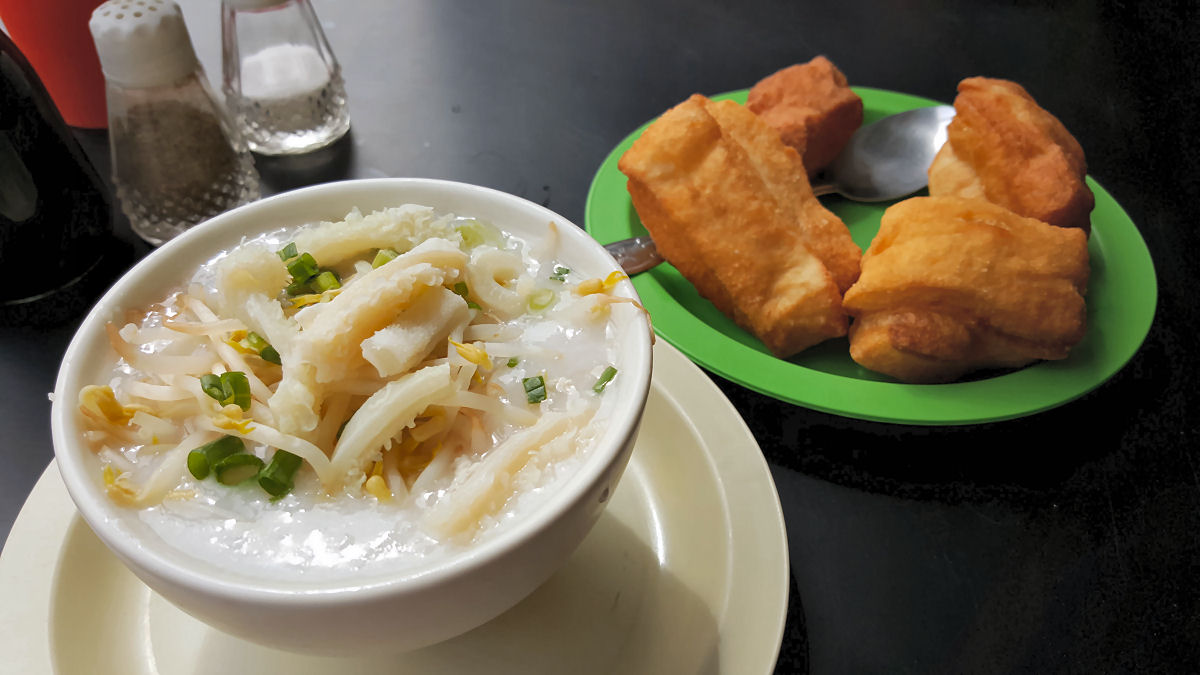
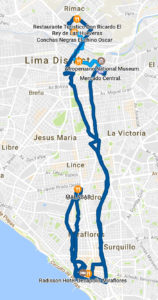
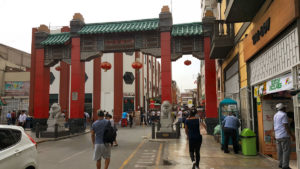
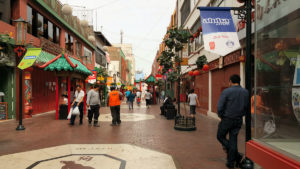
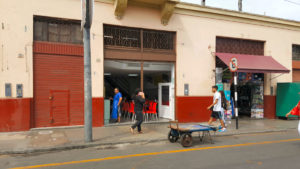
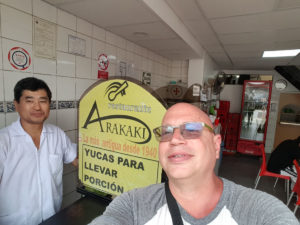
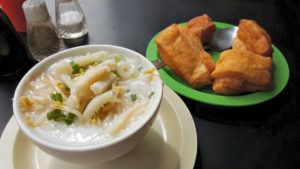
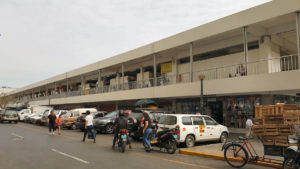
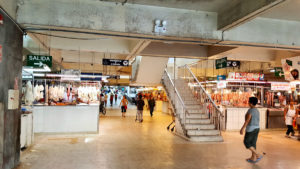
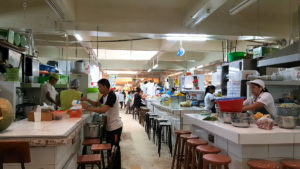
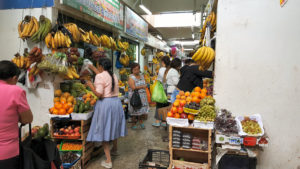
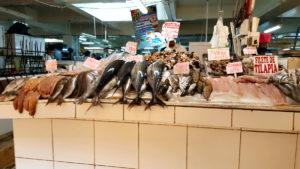
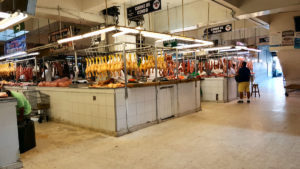
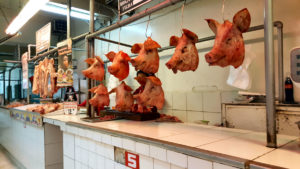
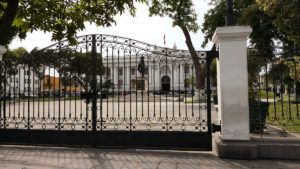
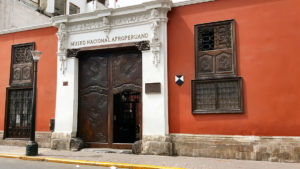
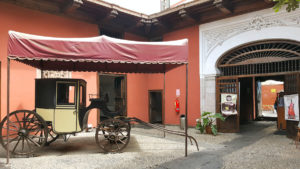
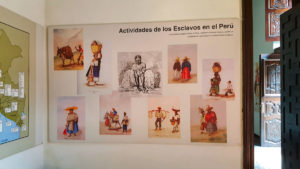
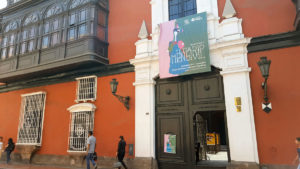
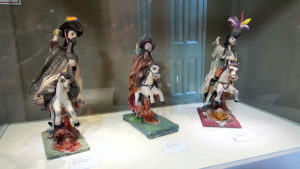
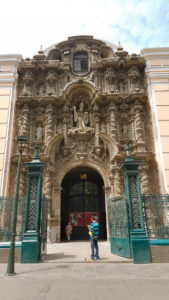
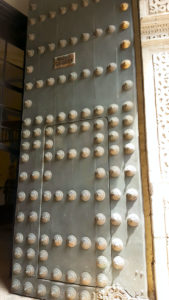
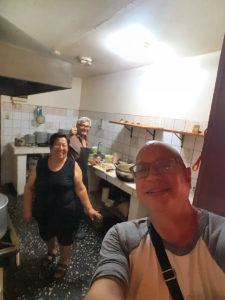
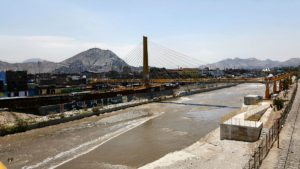
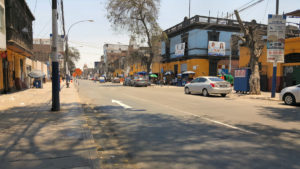
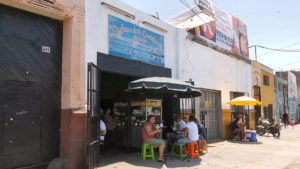
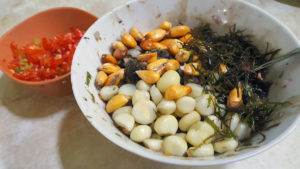
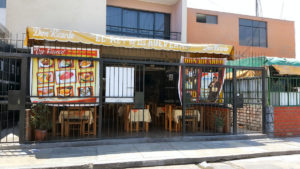
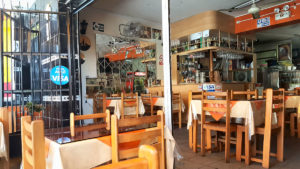
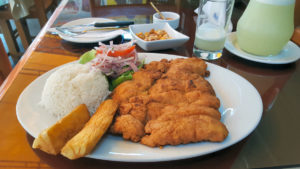
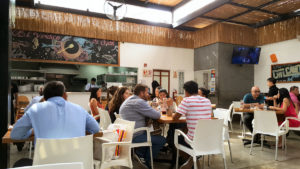
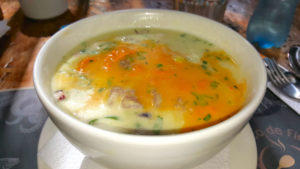
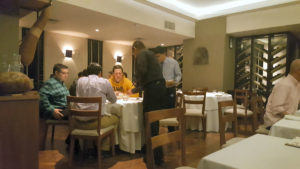
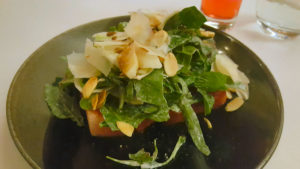
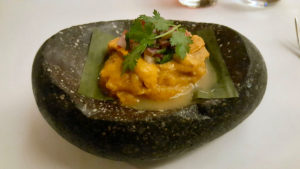
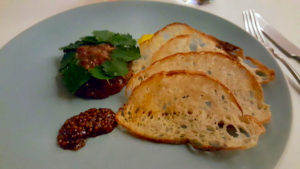
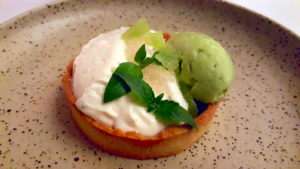
[…] Watermelon Tonnato – sliced watermelon, lightly salted; spicy sauce of mayonnaise, tuna, anchovy, caper, yellow chili; salted cucumber and radish slices; hard boiled egg; capers; parsley. (Inspired by the grilled watermelon salad at Malabar) […]
[…] Watermelon Tonnato – sliced watermelon, lightly salted; spicy sauce of mayonnaise, tuna, anchovy, caper, yellow chili; salted cucumber and radish slices; hard boiled egg; capers; parsley. (Inspired by the grilled watermelon salad at Malabar) […]